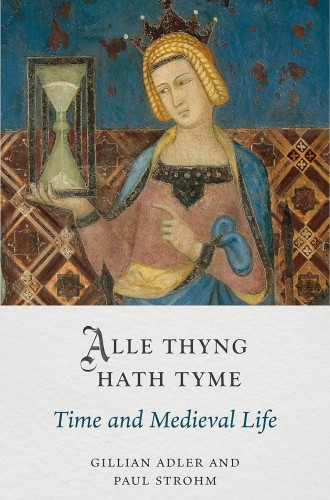Astrolabes, sundials, candles, and clocks
Gillian Adler and Paul Strohm explore the medieval preoccupation with time.

Alle Thyng Hath Tyme
Time and Medieval Life
From the moment I wake up until lights out, I spend my day checking minutes and hours. Sometimes it’s with the help of some version of the analog clock by which I first learned to tell time. More often it’s by a furtive glance at my iPhone or computer screen or, on the other generational hand, by checking the agenda in which I still quaintly chart the course of my weeks. This paper calendar alerts me to red-letter days both secular and sacred, from National Secretary’s Day to Ash Wednesday. I add to it occasions of personal significance: the birthday of a friend, the anniversary of a death, the weekend arrival of a house guest, a deadline. It notes seasonal variations as well, such as the biannual spring-forwards and fall-backs of daylight savings time, which despite regular warning always come as a surprise. But aside from noting seasonal change, I have little sense of any temporal frame beyond the man-made, the familiar ticktock. I am increasingly obsessed with time—it’s running out, it’s our most endangered species—and yet am reluctant to probe its meaning.
How idiosyncratic, how early 21st century, is my all-over-the-place experience of time? From what I read in Gillian Adler and Paul Strohm’s brief but ambitious book, I have things in common with my medieval forebears.
I am primed for this engaging text by a career-long devotion to Dante, whose Commedia is full of time-keeping references and who even in the Paradiso (10.139–148) makes one of the earliest literary references to the mechanical clock. As a Christian with a certain education and lifelong religious practice, I also know about the biblical timeline of creation from Genesis to Apocalypse; about the imprint of the liturgical year, at once linear and circular, on days, months, and seasons; about how the strategic ringing of church bells (still routine everywhere in Italy but also audible in downtown New Haven, Connecticut) articulates the sacred in the midst of ordinary time.




